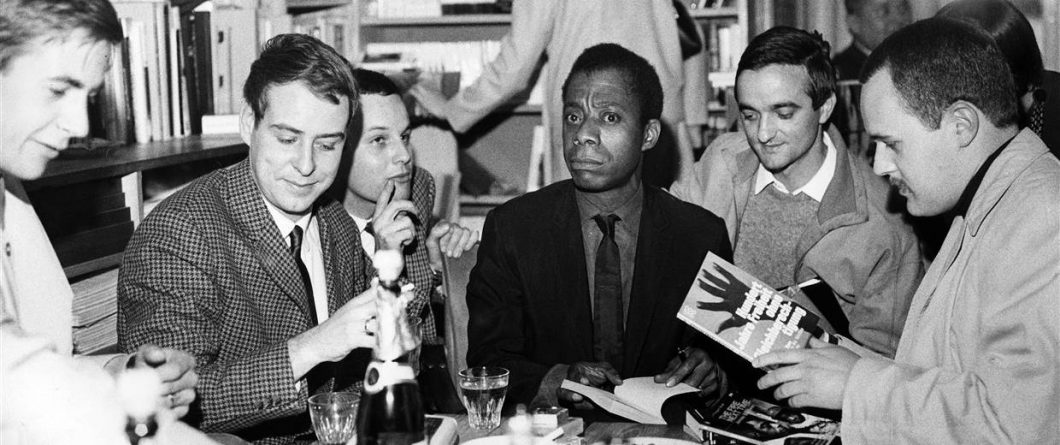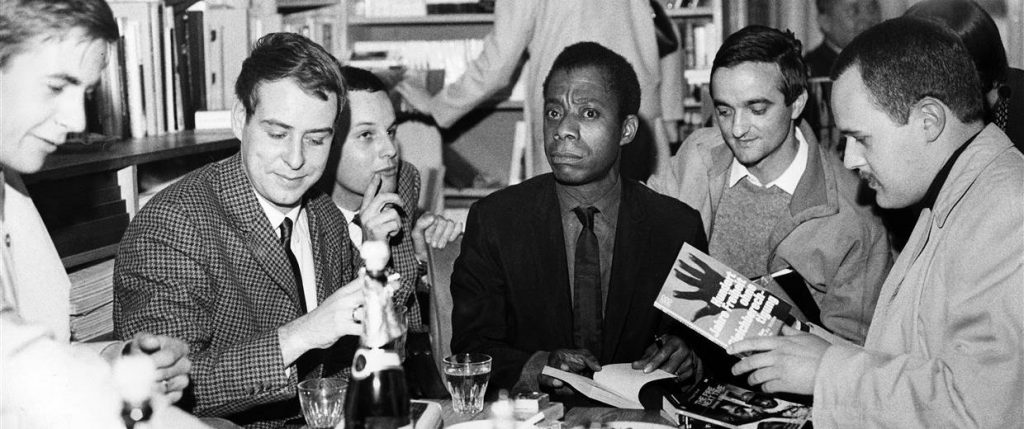Coopting James Baldwin
I Am Not Your Negro, a new documentary about the writer James Baldwin, is an example of sympathetic magic. More precisely, it’s an attempt at sympathetic magic. As explained by Sir James Frazier in his classic The Golden Bough, sympathetic magic is the effort to absorb the attributes of something by contact. To gain the power of your enemy, you eat his heart.
While the film’s subject is James Baldwin (1924-1987), it tries to give moral virtue to the modern Black Lives Matter movement by shoehorning footage of recent protests over police brutality with vintage footage of the New York novelist, essayist, and playwright. It’s a jarring and inappropriate technique, and detracts from what would otherwise have been an extremely powerful film.
The hook for I Am Not You Negro is a letter Baldwin wrote to his literary agent in 1979, detailing his plans for a manuscript entitled, “Remember This House.” It was to be a memoir connecting the lives and assassinations of Baldwin’s close friends Medgar Evers, Malcolm X and Martin Luther King, Jr. “I want these three lives to bang against and reveal each other as in truth they did,” he wrote, “and use their dreadful journey as a means of instructing the people whom they loved so much who betrayed them and for whom they gave their lives.” Baldwin died before the memoir was completed. In I Am Not Your Negro, passages from the manuscript are read by Samuel L. Jackson and are supplemented by footage of Baldwin being interviewed and giving lectures.
The footage of Baldwin is thrilling, depicting a master wordsmith arguing with tremendous passion and erudition against the evil of slavery and Jim Crow. Indispensable to Baldwin’s Aristotelian eloquence was his love of books, which shaped him from a young age. While historians, filmmakers and the media focus on Baldwin’s anger as expressed in books like The Fire Next Time (1963), this reminiscence from a 1973 interview with the writer gets to the heart of his verbal genius:
I used to tell my mother, when I was little, “When I grow up I’m going to do this or do that. I’m going to be a great writer and buy you this and buy you that.” And she would say, very calmly, very dryly, “It’s more than a notion.” That kind of dry understatement which characterizes so much of black speech in America is my key to something, only I didn’t know it then. Then I started reading. I read everything I could get my hands on, murder mysteries, [Pearl Buck’s] The Good Earth, everything. By the time I was thirteen I had read myself out of Harlem. There were two libraries in Harlem, and by the time I was thirteen I had read every book in both libraries and I had a card downtown for Forty-Second Street.
In these video clips, the author of the classic 1953 novel Go Tell It on the Mountain and Notes of a Native Son (1955) comes across as a man with a roiling desire to love America, but who simply can’t fully get there because of his treatment at the hands of whites. This yearning sets him apart from many modern racial agitators; as he put it in a 1965 debate with William F. Buckley:
It comes as a great shock around the age of 5 or 6 or 7 to discover that Gary Cooper killing off the Indians—when you were rooting for Gary Cooper—that the Indians were you! It comes as a great shock to discover the country which is your birthplace, and to which you owe your life and your identity, has not in its whole system of reality evolved any place for you.
Director Raoul Peck uses scenes from old Hollywood films to illustrate many of Baldwin’s points. Sometimes the effect is insightful, as when Baldwin describes the divide in audience reaction to a climactic scene in the 1958 movie The Defiant Ones, in which escaped fugitives played by Sidney Poitier and Tony Curtis, who are chained together, try to climb aboard a moving freight train. When Poitier opted to jump off the train rather than leave Curtis behind, white audiences found reassurance in Poitier’s selfless gesture while, according to Baldwin, black audiences thought Poitier was being a fool. In other cases the cinematic additives are eye-rolling, with John Wayne brought in several times as an example of American jingoism, a bogeyman that liberals have been excoriating for decades.
Part of the education of James Baldwin, famously, was his going to live in France at age 24. It gave him a comparative picture that did not redound to the credit of his native country. “To look around the United States today is enough to make prophets and angels weep,” he said. “This is not the land of the free.” Baldwin also expressed a desire to reach the reading public as more than “merely a Negro writer.” He wanted to be judged on his merits, not his skin color.
This desire is one of the reasons that the contemporary footage slipped into I Am Not Your Negro is so off-putting. At intervals in the film, Peck has inserted video of protests over the deaths of young black men like Michael Brown of Ferguson, Missouri. To place Brown, who was shot by a police officer while attacking him, side by side with James Baldwin is like juxtaposing the people of Ireland under the heel of the British in 1900 with a modern St. Patrick’s Day drunk getting hauled away in handcuffs and saying that both are examples of anti-Irish sentiment. It constitutes a virtue-signaling attempt by Peck to drape the film in the glory of Baldwin’s legitimate morale outrage, despite the fact that there has been undeniable progress in race relations in the United States since Baldwin decamped for Paris in 1948.
In an interview with America magazine, Peck offered the following:
We see why Baldwin is efficient, because he went to those fundamental issues. And what has really changed, fundamentally, in this country? Is there less inequality? Is the problem of poverty solved? Is the problem of racism solved? No. Thirty years is nothing in the life of a country and we can’t just pretend as if everything is beautiful. That’s why this voice is essential and I can understand that the shock is real. While working on this, although I knew all those things, I was seeing how the daily news was making this story even sharper.
And yes, that was the point of it all, to make his words present. I had to link it to the layers of images, like those black and white images of the civil rights movement, the fire hose, etc. I colored them to bring them closer to today. And I used Ferguson as black-and-white footage, so that it’s a full circle. My job was to . . . not only put all those different layers, but put them in context and connection.
Fifty years ago, James Baldwin sarcastically dismissed the idea of a black President. In 2017, we are coming off of eight years of Barack Obama. I Am Not Your Negro does a disservice to the hope—small, yet visible beneath all the justified anger—that Baldwin had for America. “At the risk of sounding excessive,” he once said,
what I always felt, when I finally left the country, and found myself abroad, in other places, and watched the Americans abroad—and these are my countrymen—and I do care about them, and even if I didn’t, there is something between us. . . . It seemed to me when I watched Americans in Europe what they didn’t know about Europeans was what they didn’t know about me.
These charitable and patriotic observations from one of our country’s great writers is a far cry from the incoherent rage of the Black Lives Matter movement.

